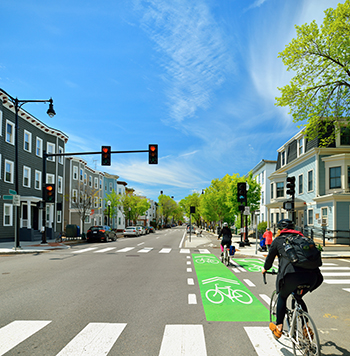Active Transportation
Communities Help Shape Our Health
 Active transportation integrates physical activity into daily routines such as walking or biking to destinations such as work, school or a transit stop.
Active transportation integrates physical activity into daily routines such as walking or biking to destinations such as work, school or a transit stop.
How our communities are planned, designed and built can have an influence on how healthy we are. People tend to be more active where they have pleasant and safe places to do so. Sidewalks, crosswalks, bike paths and lanes, as well as trees, lighting, benches, water fountains and trash removal can make a big difference.
What communities can do
Minnesota communities are working with the Statewide Health Improvement Partnership to promote active transportation to provide safe and convenient opportunities for physical activity.
Active transportation can be encouraged through:
- Sidewalks, walking paths and bike facilities
- Safe and convenient pedestrian street crossing features such as crosswalks, stop signs, stop lights and other street crossing elements
- Motorist traffic calming and speed-reduction measures
- Street landscaping and pedestrian-level street lighting
- Bike racks, lockers, or other bike parking and storage facilities
- Land use development patterns to locate homes, worksites, schools, stores and other community services and amenities within reasonable walking distances (pedestrian-oriented development) and within easy access to transit (transit-oriented development)
- Signage that helps pedestrians and bicyclists navigate to their destinations.
NOTE: OSHII staff have examples of pedestrian and bike plans, transportation plans, parks and trails plans, comprehensive plans and more. For more information, please contact health.activeliving@state.mn.us.
Learn More
By collaborating with the Statewide Health Improvement Partnership, cities and counties across Minnesota are working on creating master walk and bike plans; updating municipal plans to include Complete Streets with sidewalks and crosswalks; increasing access to connected walking and bicycling networks; connecting and promoting trail systems; and collaborating on projects that improve walkability and bikeability in communities. Learn more about SHIP.